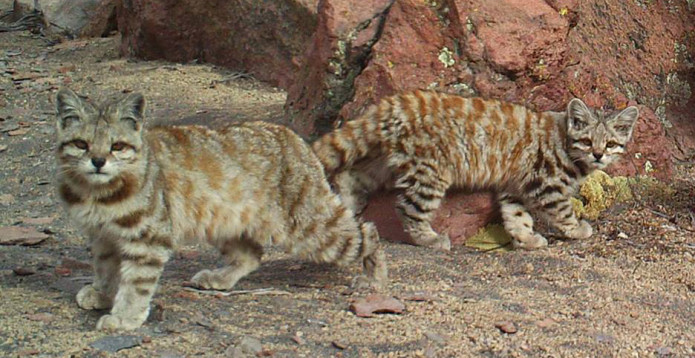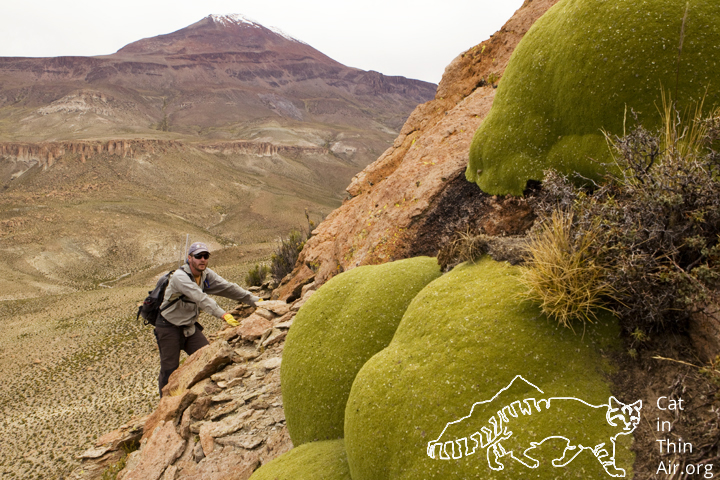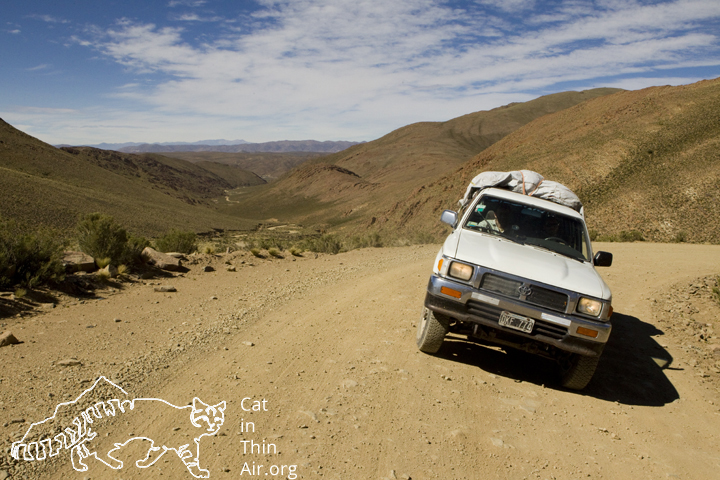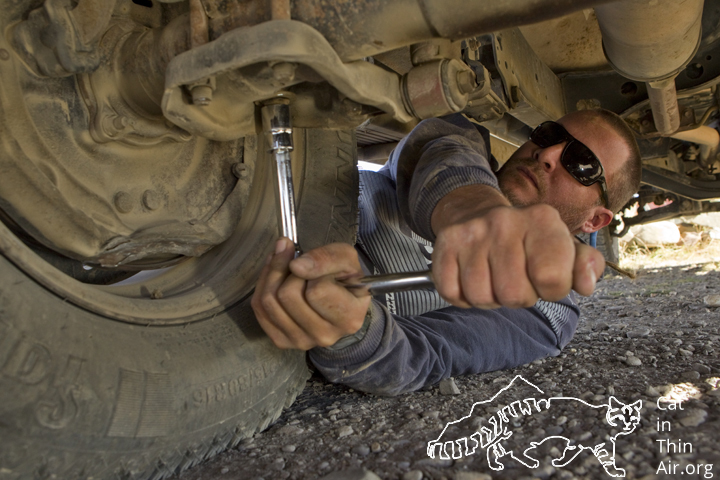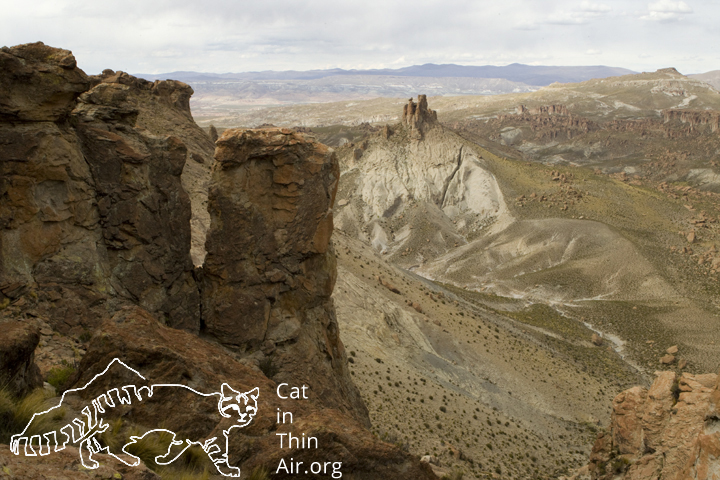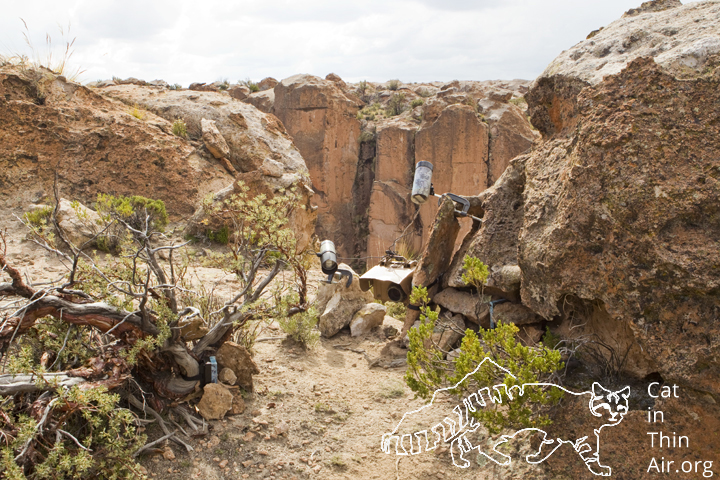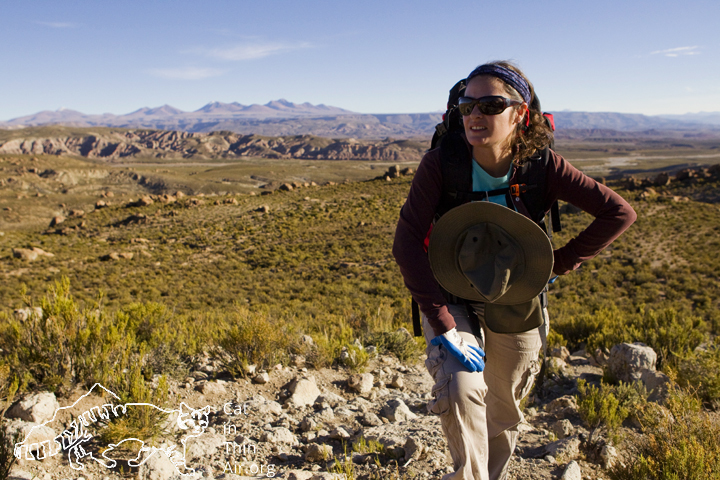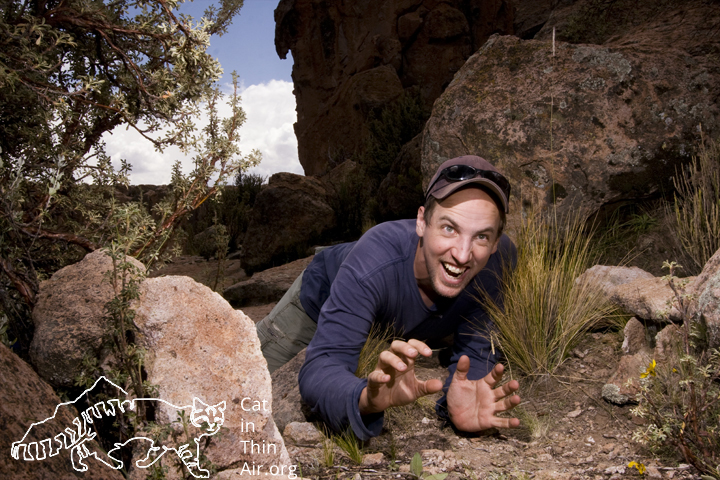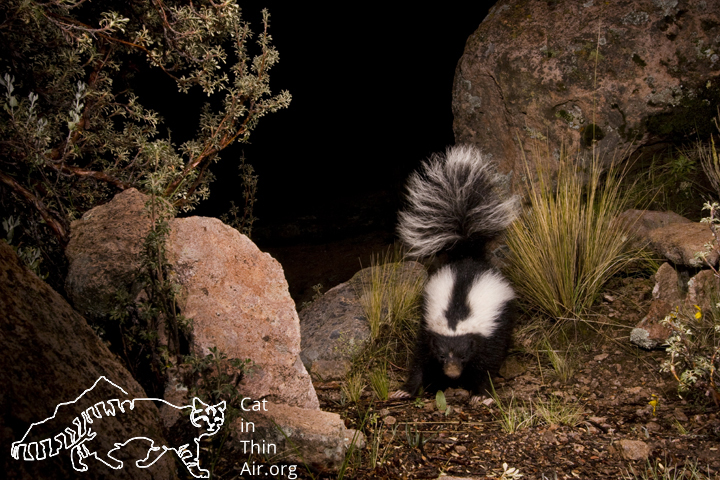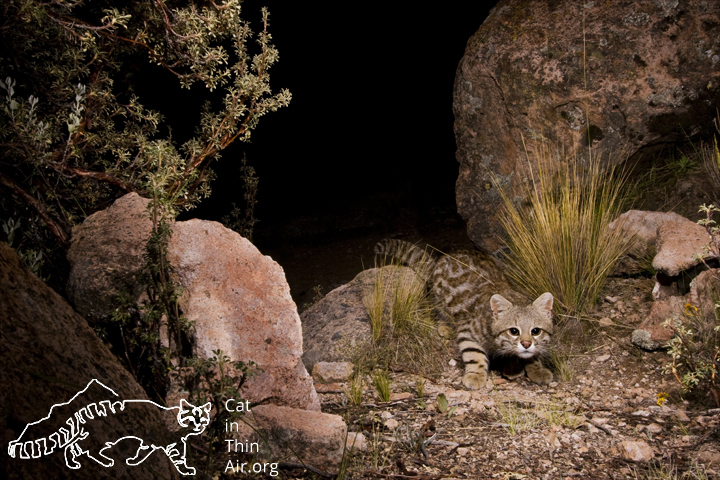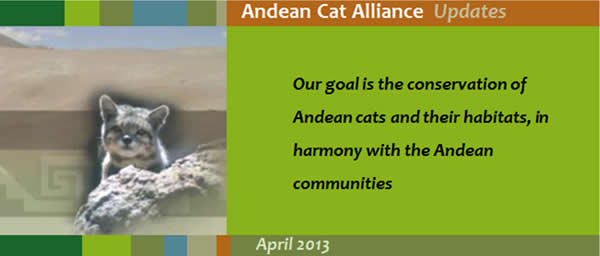The most endangered cat in The Americas needs your help. Researchers of the Andean Cat Alliance are going all out to learn as much as they can about this beautiful little cat before it’s too late. The entire population of the Andean Cat throughout their range is estimated to be around 1,300 cats. Conservation measures are urgently needed, and you can help.
#1 Spreading The Word
The biggest, most reversible problem facing the Andean cat is one that this campaign seeks to reverse: no one knows this species exists and is fighting for survival.
Because most people have never heard of Andean cats, very little support from the wildlife conservation community is available to help these cats face human-caused challenges that are driving them closer to extinction: climate change, habitat ravaging mining, vicious feral dogs, and myths held by locals who, in turn, kill these cats with trained hunting dogs.
Despite only catching a glimpse of this cat once in the wild (and being one of less than 10 people to ever do so), researcher and conservationist Rodrigo Villalobos has made it his life’s work to conserve these elusive creatures. Through hiking thousands of miles through the Andes Mountains over the span of 12 years and setting a network of camera traps, Rodrigo and his research partner Cristian have discovered one of the rarest populations of Andean cats.
The Power of Wildlife Documentaries
Wildlife documentaries raise awareness about important wildlife issues through high quality imagery. Just think about African wildlife that are relatively easy to see and film — lions, elephants, and rhinos. Most people have never stepped foot in the African savannah yet, through documentary films, we feel like we’ve looked inside their private lives and have a strong understanding of the huge conservation battles these creatures are facing. But what happens with wildlife that is very difficult to film because they are very secretive, rare, and live in extremely harsh terrains? Unfortunately for the Andean cat, this is the problem their species is facing. Now, for the first time in Andean cat conservation history, our team has found a reliable location to film this cat. This is where you come in for the Andean cat: we need you to improve the quality of our footage by 4K professional, high definition cameras. With high quality footage we have an extremely high chance of getting word about Andean cats out to people around the world through syndicated and huge media networks.
Through funding assistance of 501(3)c nonprofit, Friends of Fauna, you can make any size contribution right now and be one of the people to purchase the actual equipment that will be used to film, by camera person, the Andean cat in high definition for the very first time. Can you imagine being able to say you funded the very first camera to film the African elephant or Bengal tiger and introduce these species, through the power of social media, to the world? This is the exact opportunity you have to do with an animal even rarer than elephants or tigers — the Andean cat.
Visit their Indigogo page to help researchers publicize the plight of these cats.
#2 Double Your Support to Purchase Camera Traps
The Andean cat is one of the most enigmatic creatures of Earth, and conservationists have been struggling for years to design effective conservation actions for a species that has been considered the ghost of the Andes. Reality proves that we need to be able to find key areas where the cat is, to make the most relevant decisions that will ensure its long term conservation.
You can make this happen, your support is critical to find hotspots for conservation.
An anonymous donor provided matching funds to buy equipment for making a big scale camera trapping effort in key areas, for long term conservation of Andean cats and a whole landscape. With the acceleration of global warming and the knowledge that Andes and Patagonia will be highly impacted by this phenomenon, it is URGENT to find these sites, and you can make a difference!
Your gift will be matched completely, so you will double your impact immediately, but you need to hurry, this offer ends the first week of January, so PLEASE, donate NOW!
If you give:
USD $40 we can buy batteries and memory cards for one camera
USD $80 you support food and lodging fo one field person
USD $180 you buy a regular camera trap
USD $450 you gift an HD camera trap
USD $2500 you cover a field campaign to review cameras for a whole team!
Every amount helps and will be immediately matched!
